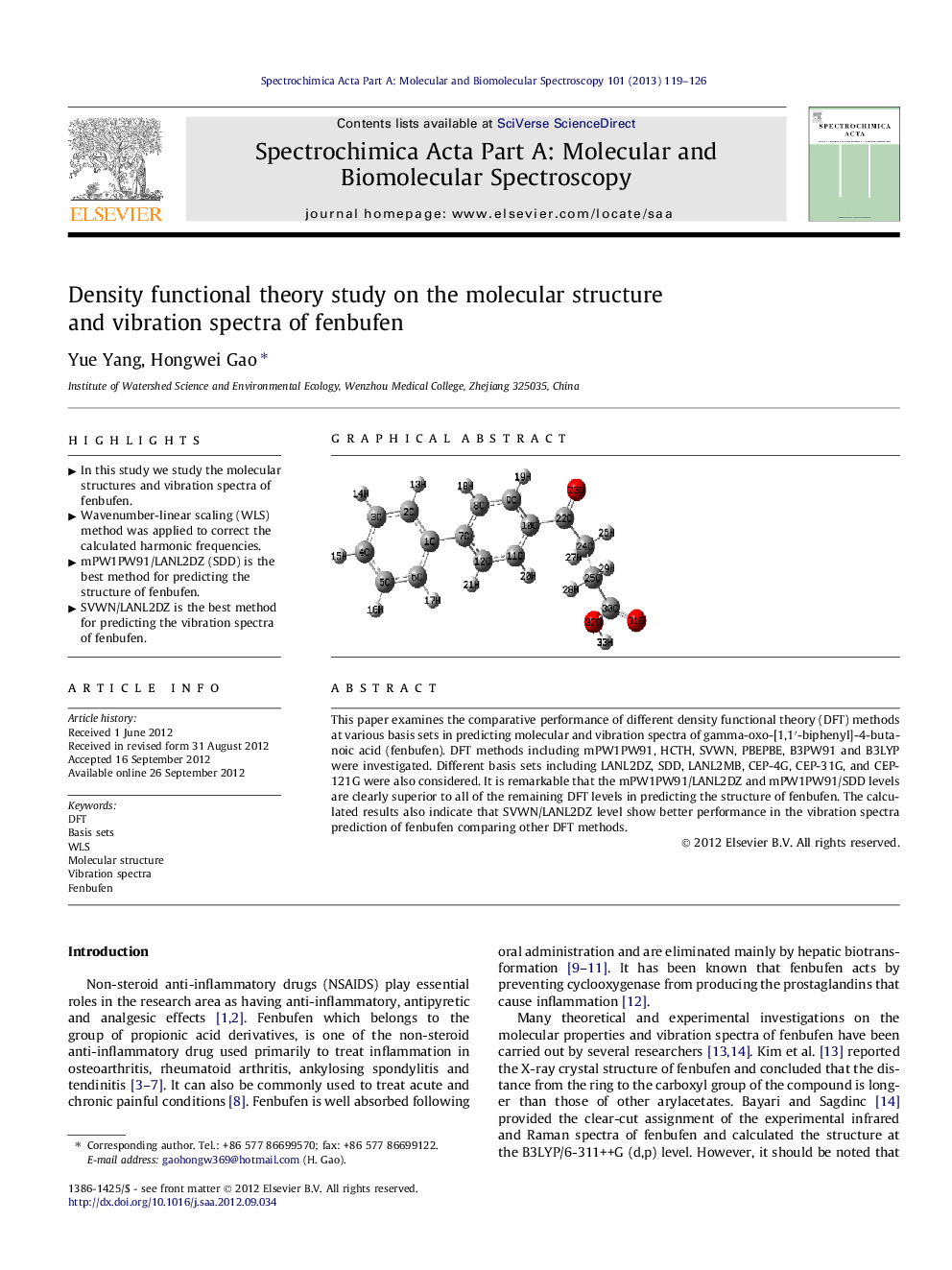| Article ID | Journal | Published Year | Pages | File Type |
|---|---|---|---|---|
| 1235041 | Spectrochimica Acta Part A: Molecular and Biomolecular Spectroscopy | 2013 | 8 Pages |
This paper examines the comparative performance of different density functional theory (DFT) methods at various basis sets in predicting molecular and vibration spectra of gamma-oxo-[1,1′-biphenyl]-4-butanoic acid (fenbufen). DFT methods including mPW1PW91, HCTH, SVWN, PBEPBE, B3PW91 and B3LYP were investigated. Different basis sets including LANL2DZ, SDD, LANL2MB, CEP-4G, CEP-31G, and CEP-121G were also considered. It is remarkable that the mPW1PW91/LANL2DZ and mPW1PW91/SDD levels are clearly superior to all of the remaining DFT levels in predicting the structure of fenbufen. The calculated results also indicate that SVWN/LANL2DZ level show better performance in the vibration spectra prediction of fenbufen comparing other DFT methods.
Graphical abstractFigure optionsDownload full-size imageDownload as PowerPoint slideHighlights► In this study we study the molecular structures and vibration spectra of fenbufen. ► Wavenumber-linear scaling (WLS) method was applied to correct the calculated harmonic frequencies. ► mPW1PW91/LANL2DZ (SDD) is the best method for predicting the structure of fenbufen. ► SVWN/LANL2DZ is the best method for predicting the vibration spectra of fenbufen.
